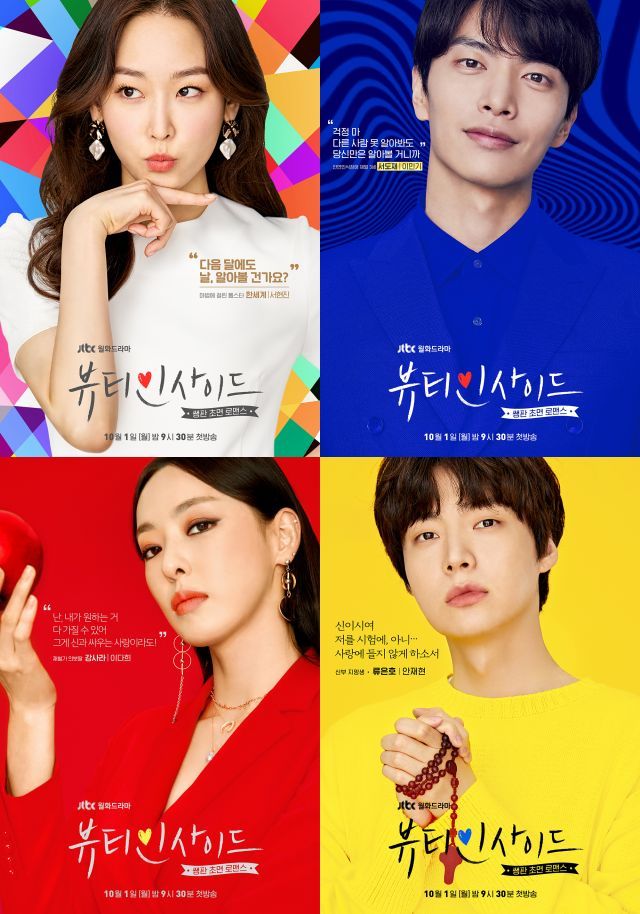Beauty inside
“Beauty Inside” presents a refreshingly unique spin on the romantic drama genre, blending elements of fantasy with a deeply emotional exploration of identity, self-acceptance, and unconditional love. The film captures the challenges of maintaining relationships in the face of extraordinary circumstances, where physical appearance and perception are both fluid and unreliable. With compelling characters and an intriguing premise, “Beauty Inside” delves into themes of personal transformation, vulnerability, and the power of human connection.
At the heart of the film is Han Se-Kye, a top actress whose reputation as a troublemaker stems not from reckless behavior but from a supernatural affliction that she cannot control. Once a month, for a week, her physical appearance changes entirely—transforming her into a different person with a new face and body. This phenomenon isolates her emotionally, leaving her to live in fear of discovery and judgment. Se-Kye’s struggles evoke empathy, as she is trapped in a cycle of loneliness and secrecy, never knowing who she will be or how others will perceive her.
Opposite Se-Kye is Seo Do-Jae, a seemingly flawless airline executive with his own hidden challenges. His condition—prosopagnosia, or the inability to recognize faces—provides an intriguing counterpoint to Se-Kye’s transformative condition. Do-Jae’s character is meticulously crafted to reflect the complexity of living with a disability while maintaining a public image of perfection. His reliance on observing people’s habits and mannerisms to navigate his world gives him a heightened sense of awareness, and his inability to recognize faces creates a poignant contrast to Se-Kye’s physical transformations.
The dynamic between Se-Kye and Do-Jae forms the emotional core of the film. Their relationship is built on mutual understanding and acceptance of each other’s vulnerabilities. For Do-Jae, Se-Kye becomes the only person whose face he can consistently recognize, even when her appearance changes—a deeply symbolic representation of his emotional connection to her beyond the superficial. For Se-Kye, Do-Jae’s condition allows her to feel seen for the first time, not just for her physical appearance but for her true self. This aspect of their relationship elevates the film, transforming it from a typical romance into a profound exploration of identity and perception.
The performances in “Beauty Inside” are remarkable, with the actors portraying both the vulnerability and strength of their characters. The portrayal of Han Se-Kye’s character, who alternates between different bodies, is particularly impressive, as the film effectively conveys her inner turmoil and emotional journey. Each actor who takes on Se-Kye’s role during her transformations brings a unique yet cohesive portrayal of her core personality, making her character’s internal continuity feel believable despite her physical changes. Meanwhile, Do-Jae’s struggle with his face blindness is sensitively portrayed, highlighting his determination to overcome his limitations while maintaining his composed exterior.
Visually, the film excels in capturing both the fantastical and intimate moments of the story. The cinematography balances the glamour of Se-Kye’s celebrity world with the quiet, introspective scenes that reveal the characters’ internal battles. The shifting appearances of Se-Kye are handled gracefully, with subtle visual cues and seamless transitions that avoid disrupting the narrative flow. The film’s color palette and lighting choices add to its ethereal quality, reinforcing the magical realism that permeates the story.
“Beauty Inside” also succeeds in weaving humor and lighthearted moments into its narrative, ensuring that the film does not become weighed down by its more serious themes. The playful banter between Se-Kye and Do-Jae, as well as the supporting characters, adds levity and warmth to the story. The film balances the fantastical elements with real-world emotional stakes, making the audience invest in the characters’ journey.
However, the film is not without its flaws. At times, the pacing feels uneven, particularly as the story attempts to juggle the development of both the romantic relationship and the individual struggles of the characters. Some viewers might find the resolution to Se-Kye’s condition to be somewhat predictable, and the film occasionally leans into familiar romantic tropes. Nonetheless, these minor issues do not detract from the overall impact of the story.
In conclusion, “Beauty Inside” is a captivating and emotionally resonant film that explores the complexities of love and identity in a world where appearances constantly shift. Its unique premise, combined with strong performances and heartfelt storytelling, makes it a standout entry in the fantasy-romance genre. The film’s exploration of the deeper connections between people—beyond physical appearance—offers a thought-provoking message about what it means to truly see and love someone for who they are. For viewers seeking a romance with depth, emotional complexity, and a touch of the fantastical, “Beauty Inside” delivers a beautifully crafted and memorable cinematic experience.

